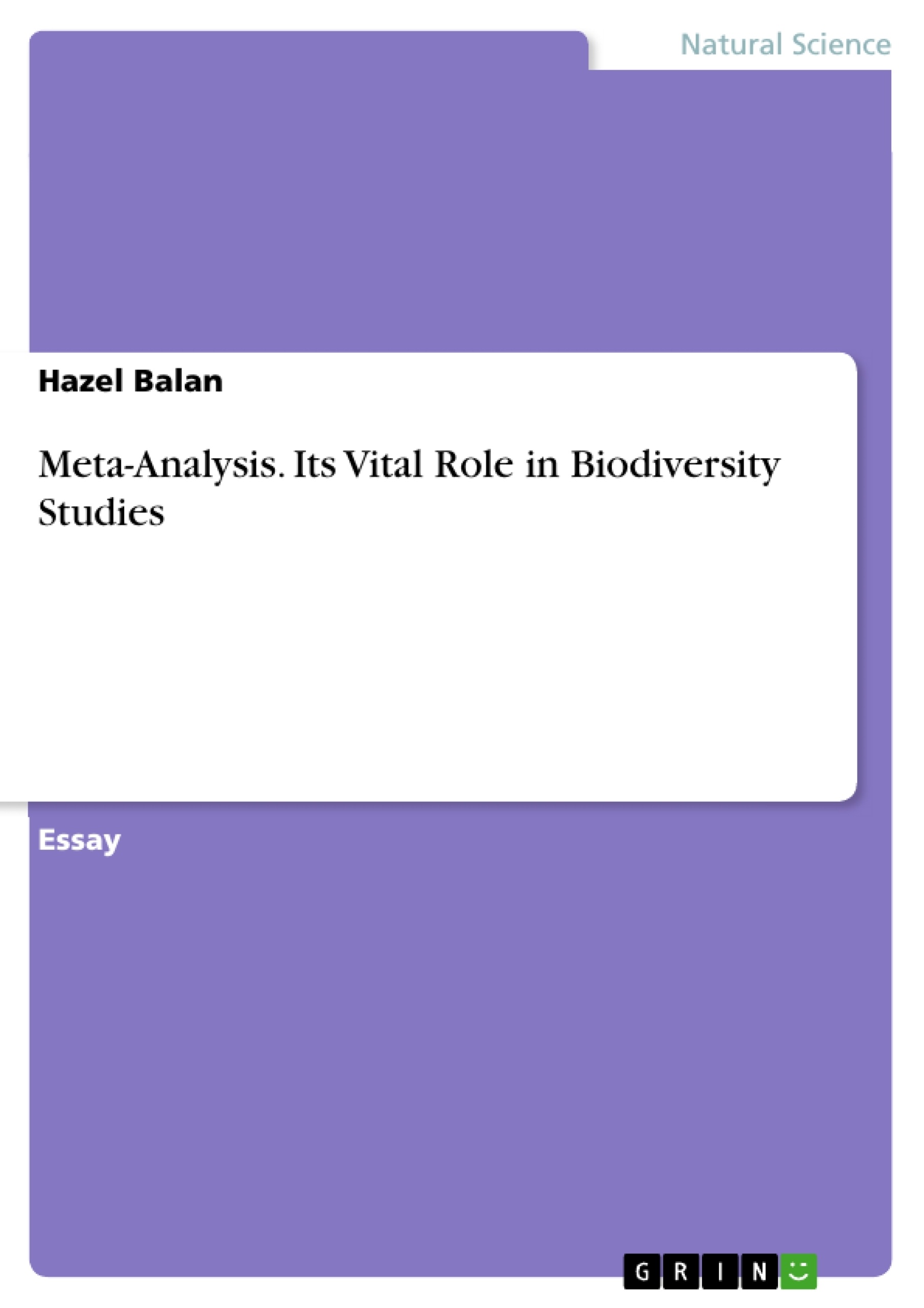In this synthesis paper, three articles relating to meta-analysis are presented. Meta-analysis is a term widely used in statistics which refers to the combined analysis of a range of individual studies that provide better and global insight of the problem being investigated. In the first article, published studies were compiled that explicitly manipulated soil biodiversity and measured responses of soil C cycling pools and/or processes. Using meta-analysis and regression analysis, it is shown that loss of soil biodiversity can have negative consequences for the soil carbon (C) cycle, significantly reduces plant tissue composition, soil respiration and litter decomposition. Second, meta-analysis has also helped the researchers to elucidate that “LOGDIST” was the main explanatory variable for the decline in abundance of bird populations due to infrastructure. Mammal and bird population densities declined with their proximity to infrastructure. Lastly, meta-analysis further showed that global mean temperature increases of more than 2oC above pre-industrial levels significantly affect local species richness. The resulting meta-model can be used for future biodiversity assessment to prevent further loss and degradation.
Inhaltsverzeichnis (Table of Contents)
- OVERVIEW:
- ARTICLE REVIEW:
- REMARKS/CONCLUSION:
Zielsetzung und Themenschwerpunkte (Objectives and Key Themes)
This synthesis paper examines the vital role of meta-analysis in biodiversity studies by presenting three articles relating to this methodology. The paper aims to demonstrate the effectiveness of meta-analysis in providing a comprehensive understanding of the relationship between biodiversity and various environmental factors.
- The impact of soil biodiversity on carbon cycling
- The influence of infrastructure proximity on mammal and bird populations
- The effect of global warming on local species richness
- The benefits and limitations of meta-analysis in biodiversity research
Zusammenfassung der Kapitel (Chapter Summaries)
The first article, by Graaff et al. (2015), explores the impact of soil biodiversity on carbon cycling. Through a meta-analysis of studies that manipulated soil biodiversity, the researchers found that loss of diversity significantly reduced soil carbon respiration and plant tissue decomposition, highlighting the crucial role of biodiversity in maintaining healthy soil ecosystems.
In the second article, Lopez et al. (2010) investigate the effects of infrastructure proximity on mammal and bird populations. Their meta-analysis of 49 studies revealed that both mammal and bird populations decline in abundance as their proximity to infrastructure increases. This finding underscores the importance of minimizing infrastructure development in sensitive areas to protect wildlife.
The third article, by Arets et al. (2014), examines the impact of global warming on local species richness. Their meta-analysis of 21 studies showed that global mean temperature increases of more than 2°C above pre-industrial levels significantly affect local species richness, leading to a decline in the fraction of remaining species. This study highlights the urgent need to mitigate climate change to protect biodiversity.
Schlüsselwörter (Keywords)
The main keywords and focus topics of this paper are biodiversity, meta-analysis, ecology, research studies, soil carbon cycling, infrastructure development, global warming, species richness, and climate change. The paper explores the application of meta-analysis in various biodiversity studies, demonstrating its effectiveness in understanding complex relationships between environmental factors and biodiversity.
- Arbeit zitieren
- Hazel Balan (Autor:in), 2018, Meta-Analysis. Its Vital Role in Biodiversity Studies, München, GRIN Verlag, https://www.grin.com/document/428911



